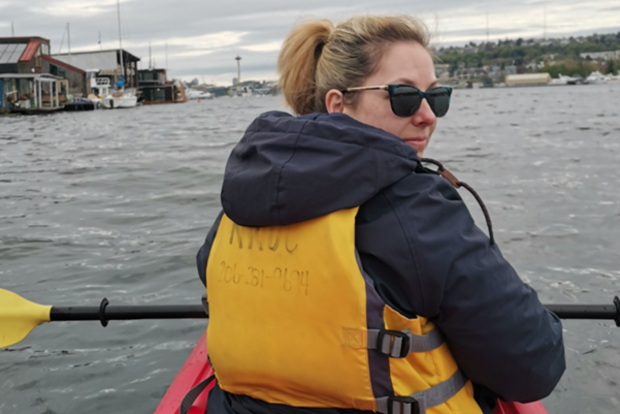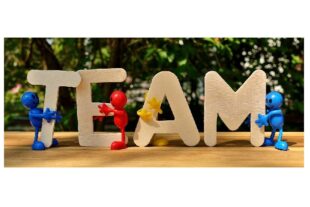Ayesha Tinsley explains how her team improved the content community's resources board, in the last in our series on Defra content community projects.

How do I…? Is there…? What is…?
In our Defra content community, when you had a question like this, you used to be able to look to the 'resources Trello board' to find an answer.
This resources board had developed over time, with years of contributions from many authors. It was a useful way to share knowledge, information, how-tos and tips with the community. We recorded it all on a board using the project management tool Trello. Everyone in the content community could add to and use this shared resource.
Time to change
Problems started to develop with our resources board. In May 2024, Trello changed to a paid-for version for workspaces of more than 10 people. This meant our resources board was now read-only, and community members could no longer edit it.
Our content community was also growing, and new members didn't have access to the board at all. It was important to solve these problems as soon as we could.
Finding a new home
The solution was to find an alternative platform to host our resources. To do this, we set up a content community project. Nine of us from across the community signed up to work together on this.
The aims of the project were to:
- meet the needs of the content community
- find a new platform and move the resources over
What the content community needed
We knew who our users were, but we had to find out their needs. So we wrote a message on Slack to the whole content community asking them to tell us:
- how they used the resources board
- if they found it useful
- what they liked and disliked
Examples of the responses included:
“The board is packed with golden nuggets.”
“It has resources to use if we're asked questions like ‘but why won’t you publish my frequently asked questions?!’”
“There are best practice templates to send to SMEs (subject matter experts).”
With this feedback we understood our user needs, so we could list the requirements for the new platform and the problems it would need to solve.
For example:
As a member of the Defra content community
I need resources on the board to be kept up to date
So I don't waste time looking at outdated or old resources
Finding a technical solution
Next, we explored possible options for the new platform and rated their pros and cons. Some examples included Microsoft Planner, SharePoint and Mural.
Microsoft Planner:
- is similar to Trello
- is a department-approved product
- is supported, updated and maintained by Microsoft
- can be hard to browse to find what you need
- has some accessibility issues
SharePoint:
- is a department-approved product
- is already used by the content community
- already has everything on it (somewhere!)
- has more than one way to navigate to the same information, for personal preference
- has 10,000 existing files, so search might be difficult
Mural:
- is tricky to organise and maintain
- has accessibility issues
After reviewing possible technical solutions and user needs, we were able to decide on the new platform. The location that stood out as being the most suitable was the content team SharePoint site.
Making the move
The resources board had a lot on it. Our next step was to do an audit, recording everything on the board on an Excel spreadsheet.
From here, we could decide what content to move over and what to archive. For example, we kept resources that were current and helpful, and archived those that were out of date and no longer useful. This allowed us to map out ideas for the new information architecture using Mural.
After we’d done this, we were ready to start moving the information from the Trello board to the SharePoint site.
Testing the new information architecture
Once everything was on the SharePoint site, our next step was to test it with our content community. We asked for volunteers and hosted user research sessions where we asked people to find different information. This tested the effectiveness of the new information architecture and allowed us to gather more feedback.
Users mentioned the button titles and page links were unclear, so we revised them for clarity and improved navigation. Users also felt some resources weren’t where they would expect to find them, so we made improvements to the information architecture too.
Naming the resources board
Now the ‘resources board’ had a new home, it needed a new name. It was no longer a board, and there were already quite a few folders on SharePoint called ‘resources’.
We pulled together a list of options on Mural so we could discuss them.
Comments included:
“Team toolkit – too specific, would you look for learning and development content in a toolkit?”
“Knowledge base – knowledge is a likeable word, and it covers many bases”
“Community hub – sounds like a social platform”
Once we had a list of names, we asked the community to vote for their favourite. The winner was 'community resources'.
Planning future improvements
Our minimum viable product was ready. We had a limited period to deliver on this project, so our last task was to outline our recommendations for future improvements.
These included:
- user testing suggestions we did not have time to action
- reviewing the governance process, as currently anyone in the community can update the pages
- technical suggestions, such as creating a page template to keep pages consistent
- areas in need of further review, such as accessibility resources
The community resources now have a new home on the SharePoint site, but this is not the end of their story. The community will need to collaboratively iterate the resources over time, adding knowledge, information, how-tos and tips to grow our shared resources on their new platform.
We will not be alone in needing to maintain a shared resource. We'd love to hear from other content communities across government about what they've done or are doing to solve this problem. Let us know in the comments!
Check out our LinkedIn page for all the latest news, stories and job openings. While you're there, why not give us a follow.

Recent Comments